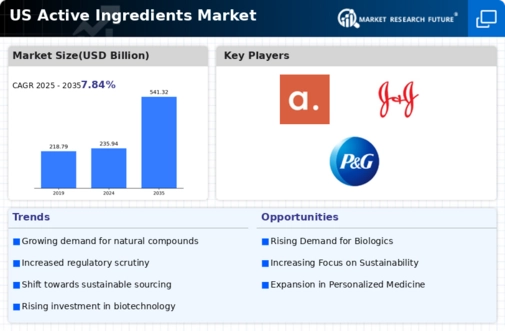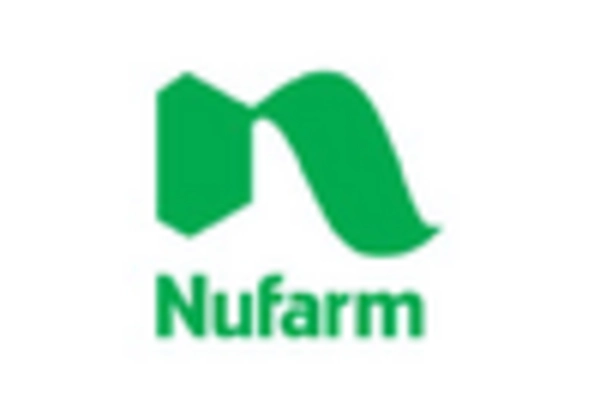Regulatory Landscape and Compliance
The active ingredients market operates within a complex regulatory framework that influences product development and market entry. Compliance with safety standards and regulations is paramount, as companies must ensure that their active ingredients meet stringent guidelines set by authorities such as the FDA. This regulatory landscape can pose challenges, but it also drives innovation as companies strive to develop safer and more effective products. The active ingredients market is thus compelled to invest in research and development to ensure compliance, which may lead to enhanced product quality and consumer trust.
Emerging Markets and Global Expansion
The active ingredients market is witnessing opportunities for growth in emerging markets, where rising disposable incomes and changing consumer preferences are driving demand. As these markets expand, companies are increasingly looking to establish a presence, tapping into new customer bases. The potential for growth in regions such as Asia-Pacific and Latin America is significant, with projections indicating a CAGR of over 6% in these areas. This trend presents a strategic opportunity for the active ingredients market to diversify its offerings and enhance its global footprint, thereby fostering long-term growth.
Increased Focus on Health and Wellness
The active ingredients market is significantly influenced by the growing emphasis on health and wellness among consumers. This trend is reflected in the rising demand for dietary supplements and functional foods that incorporate beneficial active ingredients. The market for dietary supplements alone is expected to reach $50 billion by 2026, driven by consumer awareness of health benefits associated with specific active compounds. As individuals seek to enhance their well-being, the active ingredients market is adapting by offering products that promote health benefits, thereby expanding its reach and relevance in the consumer market.
Rising Demand for Sustainable Products
The active ingredients market experiences a notable surge in demand for sustainable and eco-friendly products. Consumers increasingly prefer formulations that utilize natural and organic components, reflecting a broader trend towards environmental consciousness. This shift is evident in the market, where the organic segment is projected to grow at a CAGR of approximately 8% through 2027. Companies are responding by reformulating products to include plant-based active ingredients, which not only meet consumer preferences but also align with sustainability goals. The active ingredients market is thus adapting to these changing consumer behaviors, leading to innovations that prioritize both efficacy and environmental responsibility.
Technological Advancements in Formulation
Technological innovations play a crucial role in the evolution of the active ingredients market. Advances in biotechnology and nanotechnology enable the development of more effective and targeted active ingredients. For instance, encapsulation techniques enhance the stability and delivery of active compounds, improving their performance in various applications. The market is witnessing a shift towards more sophisticated formulations that leverage these technologies, potentially increasing the efficacy of products by up to 30%. As a result, the active ingredients market is likely to see a rise in demand for products that utilize these advanced formulations, catering to both consumer expectations and regulatory requirements.

















Leave a Comment